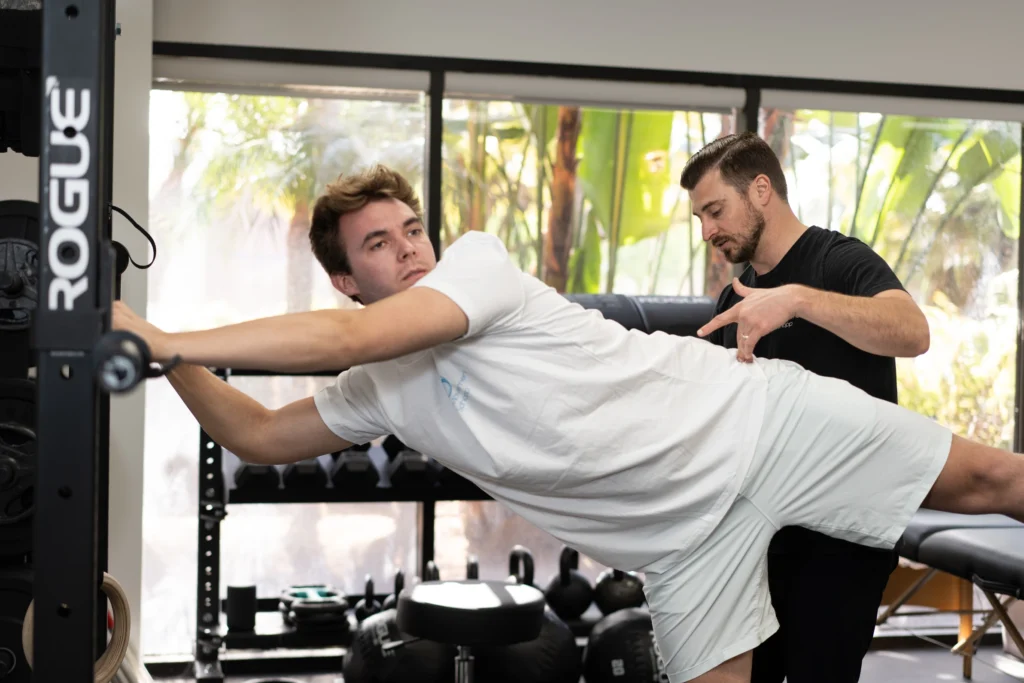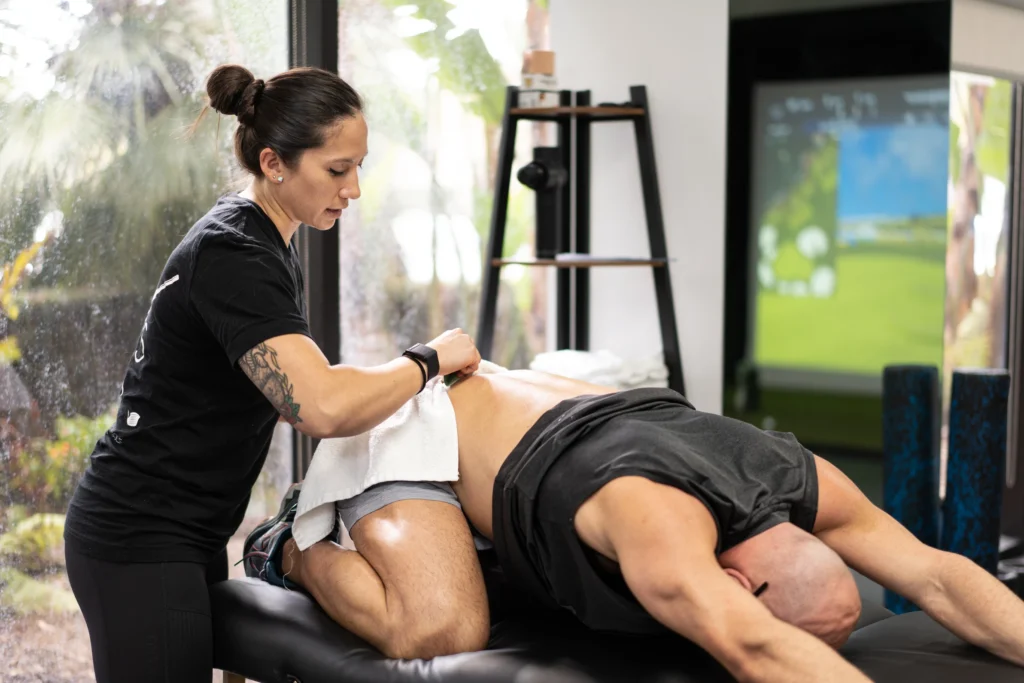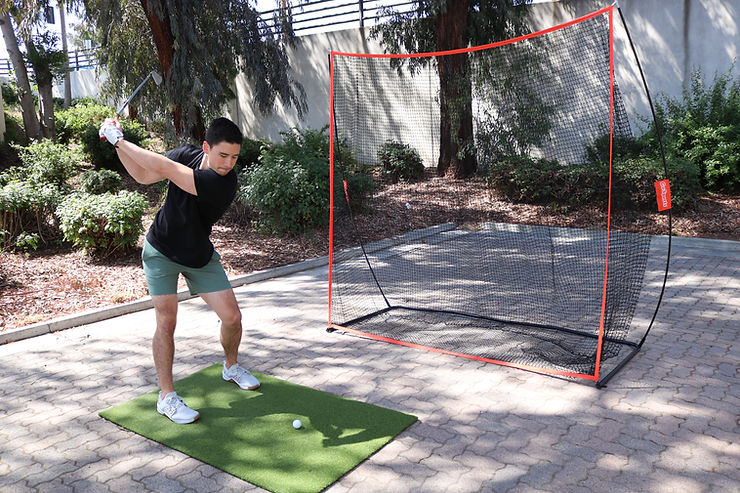Introduction
Shoulder pain can have significant effects on your quality of life. It can minimize your ability to perform even simple tasks. Whether it’s caused by an injury, overuse, or other factors, seeking relief is important. Physical therapy for shoulder pain has proven effective and non-invasive. This helps individuals regain strength, flexibility, and functionality.
In this guide, we’ll explore the anatomy of the shoulder, common causes of shoulder pain, the diagnostic process, and we will delve into the various aspects of shoulder physical therapy that can aid in pain relief.
Anatomy of the Shoulder
Understanding the structure of the shoulder is vital for comprehending the sources of pain. The shoulder is a complicated joint consisting of the humerus, scapula, and clavicle. Ligaments, tendons, and muscles work together to facilitate a wide range of movements. The rotator cuff is a group of muscles and tendons. It is crucial in stabilizing the shoulder.
Common Causes of Shoulder Pain
Shoulder pain can stem from various sources, each requiring a tailored approach for effective treatment. According to survey, shoulder pain affects 18-26 percent of adults at any given moment, making it one of the most common regional pain syndromes. Understanding the diverse causes is essential to pinpoint the root issue and establish an appropriate shoulder physical therapy plan.
Acute Injuries
- Fractures: Acute shoulder pain often results from fractures, which occur when one or more bones in the shoulder are broken. This can happen due to high-impact accidents or falls, causing immediate and intense pain.
- Dislocations: Shoulder dislocations happen when the upper arm bone pops out of the shoulder socket. This can occur during traumatic incidents, such as a fall or a collision, leading to sudden and severe pain.
- Sprains: Sprains involve the tearing of ligaments in the shoulder joint. This can happen when the shoulder undergoes a sudden and forceful movement, causing pain, swelling, and limited mobility.
These acute injuries are often linked to accidents or sports-related activities and require prompt attention to prevent further damage.
Overuse Injuries
- Rotator Cuff Tendonitis: Overusing the shoulder through repetitive motions can lead to inflammation of the rotator cuff tendons. This common condition (rotator cuff tendinitis) affects the rotator cuff muscles, causing persistent pain, particularly during overhead activities like reaching or lifting.
- Bursitis: Bursae are small fluid-filled sacs that cushion the bones, tendons, and muscles around the joints. Overuse can lead to inflammation of these sacs, resulting in bursitis. It manifests as localized pain, tenderness, and swelling in the affected area.
Overuse injuries are common in occupations or everyday activities involving frequent and repetitive shoulder use, such as painting, overhead lifting, or certain sports.
Other Causes
- Arthritis: Shoulder arthritis, whether osteoarthritis or rheumatoid arthritis, can cause chronic pain and stiffness. The degeneration of joint cartilage or inflammation within the joint can contribute to discomfort and reduced range of motion.
- Frozen Shoulder (Adhesive Capsulitis): Frozen shoulder involves the gradual stiffening and tightening of the shoulder joint capsule. Individuals may experience pain and significant restriction in movement, making daily activities challenging.
- Nerve Impingement: Pressure on nerves around the shoulder, often caused by conditions like a herniated disc or compressed nerves, can result in shoulder pain. This may also lead to sensations of numbness or tingling down the arm.
How is it Diagnosed?
When it comes to diagnosing shoulder pain, healthcare professionals employ a multifaceted approach to ensure a thorough understanding of the underlying issues. This comprehensive clinical assessment involves a combination of physical examination, imaging tests, and a detailed discussion of medical history and symptoms.
Physical Examination
A crucial step in the diagnostic process is a hands-on physical examination conducted by a healthcare professional, often a physician or a physical therapist. During this examination, the healthcare provider will assess various aspects, including:
- Range of Motion: They will evaluate the range of motion in your shoulder, assessing how well you can move your arm in different directions. Limited mobility or pain during certain movements can provide valuable clues.
- Strength Testing: The strength of the muscles around the shoulder joint will be assessed. Weakness may indicate underlying issues, such as muscle strains or nerve impingement.
- Palpation: Gentle palpation of the shoulder area helps identify areas of tenderness, swelling, or abnormalities. This hands-on approach aids in locating the source of pain.
Imaging Tests
Imaging tests are often employed to get a more detailed view of the structures within the shoulder. These tests provide valuable information about the bones, joints, muscles, and other soft tissues. Common imaging modalities include:
- X-rays: X-rays offer a clear view of the bones in the shoulder. They can reveal fractures, dislocations, or abnormalities in the bone structure.
- MRI (Magnetic Resonance Imaging): An MRI provides more detailed images or pictures of the soft tissues in and around the shoulder, including muscles, tendons, and ligaments. This is particularly useful for detecting issues like rotator cuff tears or inflammation.
Medical History and Symptom Discussion
A detailed discussion about your medical history and the specifics of your symptoms is crucial for a comprehensive diagnosis. The healthcare professional will inquire about the following:
- Onset of Symptoms: When did the shoulder pain begin? Understanding the timeline can help identify whether it is a sudden injury or a chronic issue.
- Nature of Pain: Describing the nature of the pain (sharp, dull, throbbing) and its intensity provides insights into the possible causes.
- Activities and Triggers: Discussing the activities or movements that exacerbate or alleviate the pain helps in understanding the functional aspects of the shoulder.
- Previous Injuries or Conditions: Providing information about any previous shoulder injuries, surgeries, or medical conditions helps assess the overall health of the shoulder.
- Lifestyle and Occupation: Details about your daily activities, occupation, and lifestyle habits are essential, especially if the pain is linked to overuse or repetitive motions.
Physical Therapy for Shoulder Pain: How it Helps

Physical therapy for shoulder pain aims to address the root cause of the discomfort and enhance overall shoulder function. A skilled physical therapist will tailor a treatment plan to your specific needs, focusing on pain management, hands-on therapy, and targeted exercises.
Physical Therapy Treatment for Shoulder Pain
Pain Management Techniques
RICE Method
Rest, Ice, Compression, and Elevation is a standard protocol for managing acute injuries. It helps reduce swelling, alleviate pain, and promote healing.
Heat therapy
Applying heat to the affected area can improve blood flow, relax muscles, and reduce stiffness. Heat therapy is often recommended for chronic shoulder pain.
Electrical stimulation
Electrical stimulation is used to stimulate muscles and nerves, promoting blood circulation and reducing pain. It can be particularly beneficial for muscle rehabilitation.
Ultrasound
Ultrasound therapy uses sound waves to stimulate healing and reduce inflammation in the deep tissues of the shoulder. The present findings suggest that Ultrasound Therapy as a co-intervention combined with other physical modalities effectively improves the overall pain in patients with adhesive capsulitis(frozen shoulder).
Hands-On Therapy
Hands-on therapy involves manual therapy techniques performed by the physical therapist. This may include massage, stretching, and joint mobilization to improve flexibility and relieve tension.
Joint Mobilization
Gentle movements of the shoulder joint by a physical therapist help restore proper range of motion and reduce stiffness.
Activity Modification
A physical therapist may recommend modifications to your daily activities to prevent further stress on the shoulder joint and facilitate healing.
Posture Education
Improving posture is crucial for shoulder pain relief. A physical therapist can provide guidance on maintaining proper posture to prevent strain on the shoulders.
Physical Therapy Exercises for Shoulder Pain
Implementing targeted stretching exercises into your routine can strengthen the shoulder muscles and improve flexibility. Here are some effective exercises:
Arm-across-chest Stretch
Gently pull your arm across your chest using the opposite hand, holding the stretch for 15-30 seconds. Repeat on the other side.
Neck Release
Tilt your head to one side, bringing your ear toward your shoulder. Hold for 15-30 seconds and repeat on the other side.
Chest Expansion
Clasp your hands behind your back, straighten your arms, and lift them slightly. Feel the stretch across your chest and shoulders.
Thread The Needle Stretch
Start on your hands and knees. Reach one arm under your body, threading it through the space between your other arm and leg. Hold for 15-30 seconds and switch sides.
Pendulum or Shoulder Circles
Allow your arm to hang down and gently swing it in small circles or back and forth to improve mobility.
Doorway Stretch
Place your hands on a door frame, and gently lean forward to stretch the chest and shoulders.
Seated Twist
Sit with your legs crossed, twist your torso to one side, and place one hand behind you for support. Hold for 15-30 seconds and repeat on the other side.
Prevention Tips for Shoulder Pain
Maintaining shoulder health involves proactive measures:
- Strengthening Exercises: Incorporate shoulder-strengthening exercises into your regular workout routine.
- Proper Posture: Be mindful of your posture, especially during prolonged sitting or desk work.
- Regular Breaks: If you have a desk job, take breaks to stretch and move your shoulders.
- Warm-up: Before engaging in physical activities, ensure you warm up adequately to prepare your shoulder muscles.
- Avoid Overexertion: Know your limits, and avoid overexertion or repetitive movements that may strain the shoulders.
When Should You Begin Shoulder Physical Therapy?

The sooner you start shoulder physical therapy after experiencing shoulder pain, the better. Early intervention can help to avoid the development of chronic issues and promote faster recovery. Keep in mind that shoulder discomfort is considered chronic when it has been persistent for more than six months.
Choosing the Right Physical Therapist
Selecting a qualified and experienced physical therapist is crucial for the success of your treatment. Look for a professional who specializes in shoulder injuries and rehabilitation.
When considering your options, consider The Movement Schopp as your preferred destination for expert care. Their team of skilled therapists is dedicated to providing personalized and effective shoulder pain relief. Why choose the Movement Schopp? Because your journey to recovery deserves the expertise and commitment that sets us apart.
Conclusion
Physical therapy for shoulder pain relief offers a holistic approach, addressing the root cause and promoting overall shoulder health. Through a combination of pain management techniques, hands-on therapy, and targeted exercises, individuals can regain strength, flexibility, and functionality. By understanding the anatomy of the shoulder and common causes of pain and adopting preventive measures, you can take preventative measures to guarantee the well-being of your shoulders.
FAQs
Can physical therapy help with shoulder pain?
Yes, Physical therapy is an effective and non-invasive approach to relieving shoulder pain, addressing the root cause, and restoring shoulder function.
What is a natural remedy for shoulder pain?
Natural remedies for shoulder pain include heat therapy, cold compresses, and gentle exercises. Physical therapy also plays an important role in natural shoulder pain relief.
Is heat good for shoulder pain?
Yes, heat therapy can benefit shoulder pain by improving blood flow, relaxing muscles, and reducing stiffness. It is often recommended for chronic shoulder pain.




